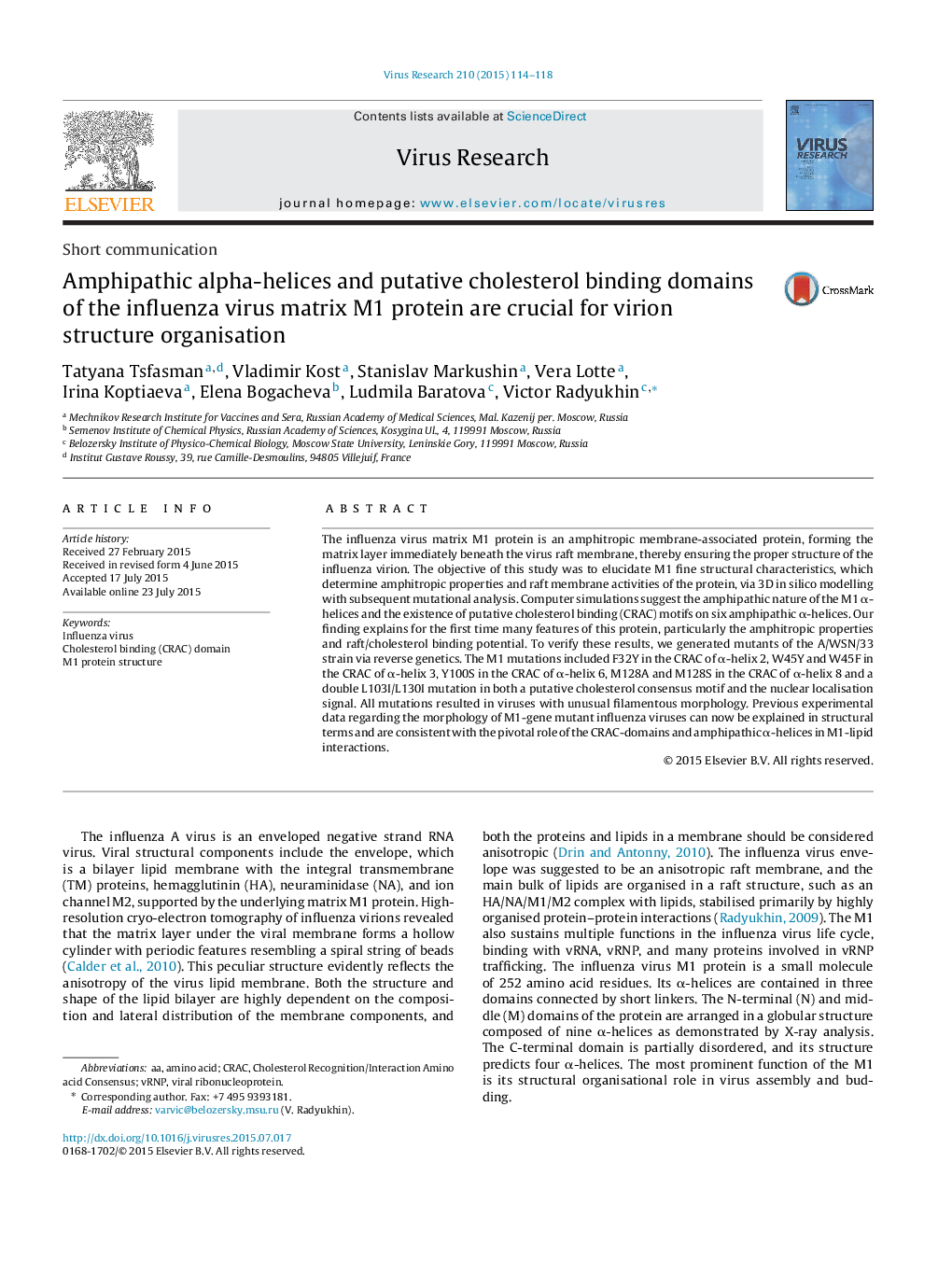| Article ID | Journal | Published Year | Pages | File Type |
|---|---|---|---|---|
| 3428042 | Virus Research | 2015 | 5 Pages |
•Functionnally relevant and highly conservative α-helices and cholesterol binding (CRAC) motifs on 6 of the α-helices of the M1 protein were predicted by in vitro modelling.•CRAC motifs on α-helices 3 and 6 are predicted to interact with the viral membrane.•Mutational analysis of CRAC motifs confirms the significance of α-helices 2, 3, 6 and 8 in M1 in virion morphology.
The influenza virus matrix M1 protein is an amphitropic membrane-associated protein, forming the matrix layer immediately beneath the virus raft membrane, thereby ensuring the proper structure of the influenza virion. The objective of this study was to elucidate M1 fine structural characteristics, which determine amphitropic properties and raft membrane activities of the protein, via 3D in silico modelling with subsequent mutational analysis. Computer simulations suggest the amphipathic nature of the M1 α-helices and the existence of putative cholesterol binding (CRAC) motifs on six amphipathic α-helices. Our finding explains for the first time many features of this protein, particularly the amphitropic properties and raft/cholesterol binding potential. To verify these results, we generated mutants of the A/WSN/33 strain via reverse genetics. The M1 mutations included F32Y in the CRAC of α-helix 2, W45Y and W45F in the CRAC of α-helix 3, Y100S in the CRAC of α-helix 6, M128A and M128S in the CRAC of α-helix 8 and a double L103I/L130I mutation in both a putative cholesterol consensus motif and the nuclear localisation signal. All mutations resulted in viruses with unusual filamentous morphology. Previous experimental data regarding the morphology of M1-gene mutant influenza viruses can now be explained in structural terms and are consistent with the pivotal role of the CRAC-domains and amphipathic α-helices in M1-lipid interactions.
